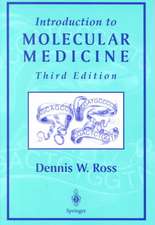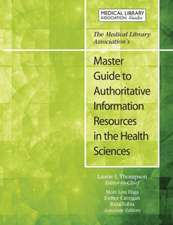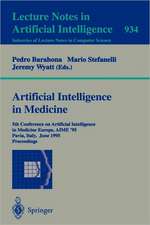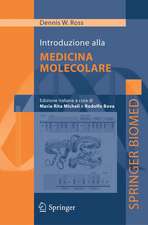Muscle Atrophy: Advances in Experimental Medicine and Biology, cartea 1088
Editat de Junjie Xiaoen Limba Engleză Hardback – 20 noi 2018
Din seria Advances in Experimental Medicine and Biology
- 9%
 Preț: 719.60 lei
Preț: 719.60 lei - 20%
 Preț: 691.93 lei
Preț: 691.93 lei - 5%
 Preț: 717.00 lei
Preț: 717.00 lei - 5%
 Preț: 716.28 lei
Preț: 716.28 lei - 5%
 Preț: 717.20 lei
Preț: 717.20 lei - 15%
 Preț: 640.24 lei
Preț: 640.24 lei - 5%
 Preț: 1113.83 lei
Preț: 1113.83 lei - 5%
 Preț: 715.71 lei
Preț: 715.71 lei - 5%
 Preț: 820.43 lei
Preț: 820.43 lei - 15%
 Preț: 641.38 lei
Preț: 641.38 lei - 5%
 Preț: 716.28 lei
Preț: 716.28 lei - 5%
 Preț: 523.99 lei
Preț: 523.99 lei - 5%
 Preț: 1031.00 lei
Preț: 1031.00 lei - 5%
 Preț: 717.00 lei
Preț: 717.00 lei - 5%
 Preț: 715.35 lei
Preț: 715.35 lei - 20%
 Preț: 1161.71 lei
Preț: 1161.71 lei - 5%
 Preț: 1170.51 lei
Preț: 1170.51 lei - 18%
 Preț: 1119.87 lei
Preț: 1119.87 lei - 5%
 Preț: 1288.48 lei
Preț: 1288.48 lei - 5%
 Preț: 1164.67 lei
Preț: 1164.67 lei - 5%
 Preț: 1101.73 lei
Preț: 1101.73 lei - 18%
 Preț: 1123.67 lei
Preț: 1123.67 lei - 5%
 Preț: 1435.64 lei
Preț: 1435.64 lei - 20%
 Preț: 1044.10 lei
Preț: 1044.10 lei - 18%
 Preț: 946.39 lei
Preț: 946.39 lei - 5%
 Preț: 292.57 lei
Preț: 292.57 lei - 18%
 Preț: 957.62 lei
Preț: 957.62 lei - 18%
 Preț: 1235.76 lei
Preț: 1235.76 lei - 5%
 Preț: 1231.55 lei
Preț: 1231.55 lei - 5%
 Preț: 1292.30 lei
Preț: 1292.30 lei - 5%
 Preț: 1102.10 lei
Preț: 1102.10 lei - 18%
 Preț: 1132.81 lei
Preț: 1132.81 lei - 5%
 Preț: 1165.19 lei
Preț: 1165.19 lei - 5%
 Preț: 1418.48 lei
Preț: 1418.48 lei - 5%
 Preț: 1305.63 lei
Preț: 1305.63 lei - 18%
 Preț: 1417.72 lei
Preț: 1417.72 lei - 18%
 Preț: 1412.99 lei
Preț: 1412.99 lei - 24%
 Preț: 806.16 lei
Preț: 806.16 lei - 18%
 Preț: 1243.29 lei
Preț: 1243.29 lei - 5%
 Preț: 1429.44 lei
Preț: 1429.44 lei - 5%
 Preț: 1618.70 lei
Preț: 1618.70 lei - 5%
 Preț: 1305.12 lei
Preț: 1305.12 lei - 18%
 Preț: 1124.92 lei
Preț: 1124.92 lei - 5%
 Preț: 1097.54 lei
Preț: 1097.54 lei - 15%
 Preț: 649.87 lei
Preț: 649.87 lei - 5%
 Preț: 1097.54 lei
Preț: 1097.54 lei - 18%
 Preț: 945.79 lei
Preț: 945.79 lei - 5%
 Preț: 1123.16 lei
Preț: 1123.16 lei
Preț: 1477.82 lei
Preț vechi: 1555.61 lei
-5% Nou
Puncte Express: 2217
Preț estimativ în valută:
282.81€ • 307.10$ • 237.56£
282.81€ • 307.10$ • 237.56£
Carte tipărită la comandă
Livrare economică 18-24 aprilie
Preluare comenzi: 021 569.72.76
Specificații
ISBN-13: 9789811314346
ISBN-10: 9811314349
Pagini: 706
Ilustrații: XV, 624 p. 76 illus., 52 illus. in color.
Dimensiuni: 155 x 235 x 41 mm
Greutate: 1.18 kg
Ediția:1st ed. 2018
Editura: Springer Nature Singapore
Colecția Springer
Seria Advances in Experimental Medicine and Biology
Locul publicării:Singapore, Singapore
ISBN-10: 9811314349
Pagini: 706
Ilustrații: XV, 624 p. 76 illus., 52 illus. in color.
Dimensiuni: 155 x 235 x 41 mm
Greutate: 1.18 kg
Ediția:1st ed. 2018
Editura: Springer Nature Singapore
Colecția Springer
Seria Advances in Experimental Medicine and Biology
Locul publicării:Singapore, Singapore
Cuprins
An overview of muscle atrophy.- Myofibers.- Muscle mass, quality, and composition changes during atrophy and sarcopenia.- Muscle changes during atrophy.- Skeleton muscle damage in intorauterine growth restriction.- The role of IGF-1 signaling in skeletal muscle atrophy.- mTOR signaling pathway and protein synthesis: from training to aging and muscle autophagy.- Past, present and future perspective of targeting myostatin and related signaling pathways to counteract muscle atrophy.- Hormones and muscle atrophy.- Ubiquitin-proteasome pathway and muscle atrophy.- Noncoding RNAs in muscle atrophy.- NF-kB and inflammatory cytokine signalling; role in skeletal muscle atrophy.- Redox homeostasis in age-related muscle atrophy.- Disturbed Ca2+ homeostasis in muscle wasting disorders.- Muscle atrophy in cancer.- The molecular mechanisms and prevention principles of muscle atrophy in aging.- Muscle atrophy in cardiovascular diseases.- Muscle atrophy in chronic kidney diseases.- Sarcopenia in liver disease: current evidence and issues to be resolved.- Muscle atrophy measurement as assessment method for low back pain patients.- Drugs of muscle wasting and their therapeutic targets.- Nutritional support to counteract muscle atrophy.- Nutritional considerations in preventing muscle atrophy.- Physical exercise for muscle atrophy.- To contrast and reverse skeletal muscle atrophy by Full-Body In-Bed Gym, a mandatory life-style for older olds and borderline mobility impaired persons.- Overview of FES-assisted cycling approaches and their benefits on functional rehabilitation and muscle atrophy.- The reversal of atrophy in human skeletal muscles by home-based Functional Electrical Stimulation after complete SCI lower motor neuron denervation.- Preverting muscle atrophy following strokes- a reappraisal.- Muscle atrophy: present and future.
Notă biografică
Dr. Junjie Xiao is Principal Investigator and Professor at Regeneration and Ageing Lab in Shanghai University, Shanghai, China.
Textul de pe ultima copertă
The book addresses the development of muscle atrophy, which can be caused by denervation, disuse, excessive fasting, aging, and a variety of diseases including heart failure, chronic kidney diseases and cancers. Muscle atrophy reduces quality of life and increases morbidity and mortality worldwide. The book is divided into five parts, the first of which describes the general aspects of muscle atrophy including its characteristics, related economic and health burdens, and the current clinical therapy. Secondly, basic aspects of muscle atrophy including the composition, structure and function of skeletal muscle, muscle changes in response to atrophy, and experimental models are summarized. Thirdly, the book reviews the molecular mechanisms of muscle atrophy, including protein degradation and synthesis pathways, noncoding RNAs, inflammatory signaling, oxidative stress, mitochondria signaling, etc. Fourthly, it highlights the pathophysiological mechanisms of muscle atrophy in aging and disease. The book’s fifth and final part covers the diagnosis, treatment strategies, promising agents and future prospects of muscle atrophy. The book will appeal to a broad readership including scientists, undergraduate and graduate students in medicine and cell biology.
Caracteristici
Describes the general aspects of muscle atrophy Overviews molecular mechanisms of muscle atrophy Provides diagnosis, treatment strategies, promising agents and future prospects of muscle atrophy






















